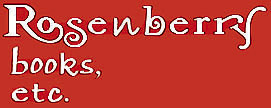Wise Appletta cultivates becoming more Connected, more Alive and more Creative … but should we claim that every child is an ARTIST?
“We are more or less creative because we are more or less alive … Connectedness makes aliveness possible.” Thank you, Diane for your chat with Larry Dossey, author of The Extraordinary Healing Power of Ordinary Things and Cara Barker, author of World Weary Woman: Her Wound and Transformation
It is quite clear that this is what the Letters from Appletta Tooth Fairy are all about — helping children, through creative make-believe, perceive their connectedness to their inner selves, to the natural world and to the subtle possibilities of the unseen.
Appletta’s encouragement comes through playful and often practical stories of suggesting ways to reach beyond fear, anger, loneliness, frustration, sadness, confusion, and even hyper-activity to access helpful resources that are always there.
For instance, The Letters from Appletta Tooth Fairy — Green Set includes a letter which begins, “Do you ever get Frightened?? I sure do!,”
Appletta later goes on to say, “… you know, Fairies can be, might be, anywhere. If you are suddenly frightened or suddenly lost — stop — draw that white circle securely around and find a quiet place inside. You might just sense some help nearby.”
So yes, Appletta is all about creative approaches to being alive, and her letters encourage creative make-believe in children.
…but the question of ART — and Cara Barker’s assertion that all children are innately ARTISTS — made me wonder if Appletta ever mentioned or discussed ART in any of her letters.
For sure, Appletta draws pictures all over her letters, and her handwriting is supremely expressive. But I wondered if being an ARTIST was important to wise Appletta.
And indeed, I cannot find any mention of ART, per se, in the letters. There are some fairies who do activities in the realm of arts and crafts:
She tells about a little fairy called Bowl, who “… would go silent while knitting maps (with the dustball yarn, of course),” and, in another letter, we learn about Merweed Fairies harvesting shell-tools and shell-art.
We hear, in the Blue Set, of the Passionfairies who, “If they don’t dance every day — same time, same place — there is TROUBLE! The kind of trouble a bunch of grumbly little Fairies with the fidgets can make … BIG trouble — PASSIONATE trouble! So they know better than to NOT dance.”
Then, there are a pair of Pillywiggins Appletta knows who collect words from Big People like you and me: “Bouncing Bet and Joe-Pye especially like the words of songs and poems. They collect them all the time. There’ll be hundreds of Big People who are just Wild about a song. They sing it waiting at stop lights and while clipping their toenails. But they have NO idea what the words Mean. Bouncing Bet and Joe-Pye took the meaning and left only the sounds behind.”
So, it seems, Appletta is interested in aesthetic activities, but nowhere does she focus on children becoming ARTISTS.
Why is this interesting to me? It is interesting because what’s important to Appletta is cultivating a creative approach to ourselves, to others and to all situations, whether pleasant or challenging. As Diane suggests: Connectedness leads to Aliveness, which leads to Creativity. But Appletta isn’t writing to little ARTISTS.
This is a good thing, as we may or may not perceive a child’s potential. Why should we project on a child our expectation that a child should be or become an ARTIST?
Some children who grow up with The Appletta Letters may indeed become artists, but hopefully ALL children who grow up with The Appletta Letters will become more Connected, more Alive and more Creative.
- Angela Elmore is the author of Appletta Tooth Fairy and the Whirligigs, which she wrote soon after her son (now grown) received his last letters from Appletta. “The Annotated Letters from Appletta” are an ongoing blog about some of Angela’s favorite Letters from Appletta Tooth Fairy.



